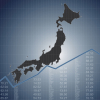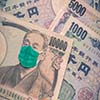Insights
On the Ground in Asia-Monthly Insights: Asian Fixed Income-January 2022
Policy actions by monetary authorities diverged across the region; we remain cautious on bonds of low yielding countries and regional currencies.
Navigating Japan Equities: Monthly Insights from Tokyo (February 2022)
We analyse the course the Bank of Japan could take as other major central banks move towards policy change; we also take a deeper look into Japan’s strong exports, which are expected to keep buoying the economy in 2022.
Have you ever stopped to imagine what would happen if the world’s central banks spent just over a decade pouring USD 25 trillion of liquidity into the economy with more than 60% of that liquidity created in the last two years? In this article, we’ll try to assess what has happened and think about how investors should navigate the next phase of the greatest financial experiment of all time.
Balancing Act-Monthly insights: Multi-Asset Team-February 2022
The outlook is currently challenging. Tightening is coming, but it is not here yet and in the meantime current policy remains quite accommodative. There is no doubt that extremely easy policy boosted equity prices, which were reinforced by strong earnings. Still, we believe organic growth can continue.
Harvesting Growth, Harnessing Change - Monthly Insights: Asian Equity-January 2022
Asian stocks had a tough start to 2022 amid concerns that persistent inflation could cause any tightening by the US Federal Reserve (Fed) to be more aggressive than expected. For the month, the MSCI AC Asia ex Japan Index fell by 3.10% in US dollar (USD) terms.
US Federal Reserve: Approaching lift-off
Increasing expectations of a more aggressive Fed tightening cycle have led to a sell-off in US Treasuries. We share our thoughts on what this means for investors in 2022 and discuss our outlook for Asian bond markets.
Differentiation through engagement: Opportunities in Japan equities
We highlight the increasing importance of engagement in Japan, explain how it could be the key to unlocking the long-underperforming Japanese market’s potential, and assess how it can lead to the generation of alpha.
India: Reaping growth from change
Going back to India for a month after two long years of not being able to visit my family, I was pleasantly surprised by the new normal. While there has been much adversity, COVID-19 has also sparked positive change, especially on technology adoption.
Thoughts for seasick investors
It would not be surprising if the major swings in the markets and macroeconomic conditions, including historic central bank shifts, have made most investors somewhat seasick. Recently on a day-to-day basis, markets seem to react quite irrationally, but the overall backdrop is fairly clear: the markets are getting accustomed to one of the most rapid and major shifts in Federal Reserve policy ever in its history.
Global Equity Quarterly (Q4 2021)
An ability to look forward to better times and remain optimistic is invaluable. These attributes are no less helpful when investing in equities. Whilst you can get an unpleasant surprise from misjudging the direction of the tide while enjoying your picnic, the consequences for misjudging the direction of the liquidity waves look more pronounced than ever as we enter 2022.
Balancing Act-Monthly insights: Multi-Asset Team-January 2022
As is often the case, markets are a better reflection of general sentiment than news headlines and so far, it points to an ongoing global recovery as equities hold their gains of 2021 and long-term bond yields rise. It may not be time yet to write off more difficult scenarios derived from the outbreak of Omicron, but facts so far do speak more positively than just one month ago.
On the Ground in Asia-Monthly Insights: Asian Fixed Income-December 2021
On the back of uncertainties surrounding Omicron and major central banks turning hawkish, we deem it prudent to hold a slightly cautious stance on duration, as well as a slightly defensive stance on Asian currencies.
Harvesting Growth, Harnessing Change - Monthly Insights: Asian Equity-December 2021
Taiwan and South Korea were buoyed by strong exports as sustained global demand for electronics supported hardware tech stocks amid widespread supply chain disruptions. The ASEAN region saw mixed returns. Thailand was the best performer as policymakers approved new stimulus measures to support domestic consumption, while the Philippines had to delay COVID-19 vaccinations on the back of Typhoon Rai.
Navigating Japan Equities: Monthly Insights from Tokyo (January 2022)
We expect Japanese equities to rise significantly in 2022, supported by factors such as the government’s fiscal and coronavirus policies, the reshuffling of the Tokyo Stock Exchange (TSE) and robust exports.
2022 Global Multi Asset Outlook: Gauging long-term growth prospects
We maintain a constructive view of risk assets but are cognizant that the path toward realising gains will be more delicate as we traverse the course of the Fed and other central banks removing their easy policies.
2022 Asian Equity Outlook: Well positioned to navigate tightening
We believe that Asian economies are well positioned to navigate monetary tightening in the US. Government finances are healthier, as are corporate balance sheets. Most Asian economies are digitising faster than their western peers, while consumption is set to receive a meaningful boost from economic reopening.
Global Investment Committee's 2022 Outlook: Positive for risk assets
According to our Global Investment Committee, which concentrates on the intermediate term-view regarding developed markets for pension funds and other long-term investors, 2022 looks to be a challenging, but positive year for risk assets. We believe that the G-3 central banks will become more hawkish, and such pivots can often cause potholes and at the very least headwinds, but we trust that policymakers can traverse their new course successfully overall.
2022 New Zealand Fixed Income Outlook: Boxing on into 2022
For a nation that prides itself on punching above its weight in all we do, 2021 has seen New Zealand bobbing and weaving against the ropes somewhat, as we’ve fought the economic impact of an enduring COVID-19 pandemic. We may have been down in some places, but we’re certainly not out as we approach 2022.
2022 Global Equity Outlook: Disruption sharpens the focus on Future Quality
The initial discovery of the Omicron variant was met with fairly sensational reporting by some of the world’s media and this fed through quickly into investor sentiment. It is probably true, however, that even if Omicron had not surfaced it was probably about time that investors were again reminded of the volatility that resides in markets, despite the mollifying impact of endless liquidity injections by central banks.
2022 Japan Equity Outlook: ESG to bring Japan to the fore
ESG initiatives are expected to become ever more important for companies and investors around the world in 2022. We expect many Japanese companies to come to the fore amid this global shift towards ESG, with enhancements in ESG disclosures shedding light on their value creation opportunities amid the current drive towards decarbonisation.
2022 Singapore Equity Outlook: Focusing on sustainable growth
The Singapore economy is on a road to recovery. Although the economy has already rebounded sharply in 2021, we expect the recovery theme to remain intact and continue supporting the Singapore economy in 2022. We see a broadening of growth within Singapore’s key economic engines in 2022, with a sharper recovery expected in the services sector as the economy reopens.
2022 China Equity Outlook: Focusing on new market leaders
Amid a flurry of headlines, investors may have largely overlooked the significant number of recent positive developments in China, such as initiatives directed towards ambitious renewables targets, the continued opening up of the financial sectors and support for a significant number of industries including AI and big data. We believe these areas could become the new leaders of China’s capital markets, representing investment themes for the next several decades.
2022 Asian Fixed Income and FX Outlook: Regional recovery expected
The economic recovery in Asia ex-China is likely to improve significantly in 2022 as regulations are eased, borders are reopened and vaccination rates increase. We anticipate these developments to boost private sector confidence, providing an important tailwind for Asian ex-China growth in 2022.
Harvesting Growth, Harnessing Change - Monthly Insights: Asian Equity-November 2021
Asian stocks fell in November on concerns that the spread of the new Omicron COVID-19 variant could derail global reopening plans and delay economic recoveries.
2022 Global Fixed Income Outlook
We present our 2022 outlook for core markets, emerging markets and global credit.
2022 Asian Credit Outlook: Growth momentum seen reviving
The macro backdrop and robust corporate credit fundamentals remain supportive of Asia credit spreads. As such, we expect growth momentum of many Asian economies to gather pace heading into 2022. Overall corporate credit fundamentals are expected to remain robust, with earnings growth staying strong—albeit at a slightly slower pace compared to 2021.
Global Investment Committee’s 2022 Outlook: Continue risk-positive, especially for Japan
The global economy should match the consensus for strong growth, thanks to vaccinations, continued fiscal stimulus, acceptable global geopolitical conditions, and continued low interest rates despite increasingly hawkish central banks. Such, via increased corporate profits, should allow equity markets to perform very well ahead, with impressive returns in each region, particularly in Japan.
Japan’s “Show Me the Money” Corporate Governance: 3Q Record High
The just released 3Q CY21 data on aggregate corporate profits in Japan was very positive, as although for the single quarter, the overall corporate recurring pre-tax profit margin declined from the 2Q, as it does routinely for this non-seasonally adjusted data.
Future Quality Insights - December 2021 - A trip to Lisbon
Just a few weeks ago I attended my first in-person conference since 2019. Over 40,000 people descended upon Lisbon for Web Summit, one of the world’s largest technology conferences. The event brings together CEO’s and founders of established firms together with start-ups and policymakers to discuss and pitch ideas over the course of a week.
Why Japan’s CPI remains low when other economies grapple with inflation
As the global economy takes steps to recover from the pandemic, prices have steadily risen around the world. Japan, however, remains an exception among the major economies. The country’s headline CPI did tick up in October, but at a very modest pace, showing that inflation is yet to gain strong traction in a country long stuck in deflation.
China: Regulate in order to innovate
Every few years, concerns emerge over whether China is investable. We are currently witnessing the latest round of this cycle amid China’s drive to regulate. However, investing in China during such moments of doubt has reaped substantial returns in the past. The key is not missing the forest for the trees when China is regulating in order to innovate.
Asian stocks rose in October, with investors remaining focused on rising inflationary pressures and the US Federal Reserve’s tapering plans. The markets’ key concern is China’s economic performance and its impact on the energy and commodity complexes.
On the ground in Asia: Monthly insights from the Asian Fixed Income Team-October 2021
We expect Indonesian bonds to outperform, as demand is supported by positive supply technicals. Meanwhile, we see bonds of low-yielding countries like Singapore, South Korea and Thailand prone to bear flattening, driven mainly by UST movement.
Japan Value Insights: Medical technology key to value and addressing inefficiencies
Japan’s rapidly advancing medical technology is viewed as a way to address the healthcare sector’s inefficiencies while at the same time offering potential value opportunities.
Japan Equity Monthly – October 2021
We explain how the recent lower house election win gives Japan’s new prime minister a free hand to pursue policies aimed to help the economy recover from COVID-19. We also analyse why a weaker yen no longer provides as much of a boost to equities.
Global Equity Quarterly Q3 2021
Our philosophy is centred on the search for “Future Quality” in a company. Future Quality companies are those that we believe will attain and sustain high returns on investment. ESG considerations are integral to Future Quality investing as good companies make for good investment.
Asian Fixed Income Monthly - September 2021
US Treasury (UST) yields rose in September, with the US Federal Open Market Committee finally alluding to moderate its asset purchases as soon as November. The rise in rates was further supported by an escalating power crunch across Europe and China amid surging energy prices prompting concerns about inflation.
Multi-asset Monthly - October 2021
Volatility has arisen as we expected it eventually would, and September is often an apt month to rediscover risk given market participants’ return from summer vacations noting that record high equity markets do not quite square with a number of significant risk events on the near-term horizon.
Asian Equity Monthly - September 2021
Asian stocks fell in September, with concerns about China’s growth outlook and the US Federal Reserve (Fed)’s taper plan being the key drivers of sentiment. For the month, the MSCI AC Asia ex Japan Index declined by 4.2% in US dollar (USD) terms.
Japan Equity Monthly - September 2021
We provide an update of Japan’s political calendar as the new Prime Minister Kishida leads the ruling party into a 31 October general election, which could have a significant market impact. We also discuss what the recent China-related volatility could mean for the Japanese market.
Global Investment Committee’s 12-month Outlook: Continue risk-positive, especially for Japan
Out of the six scenarios presented, a narrow majority of our committee agreed again on a positive scenario in which the global economy matches the market consensus for solid growth, while equities continue to rally.
Latin America: Supplier to a commodity-hungry world
Inflation is on everyone’s mind. From central bankers to bakers, it is one of the biggest topics of discussion. The prices of many commodities are rising sharply. The reasons vary. Supply constraints, sharp rise in demand or bad weather—take your pick.
Multi-asset Monthly - September 2021
As we contemplate a post-pandemic world, it is becoming more likely that things will not return to “normal” as we once knew it. While vaccines have been highly successful in preventing serious illness in those who are still contracting the virus, the Delta variant of COVID-19 is also proving to be harder to contain.
Asian Fixed Income Monthly - August 2021
US Treasury (UST) yields rose in August, prompted by data showing stronger-than-expected US employment growth. The rise in rates was supported by hawkish comments from some US Federal Reserve (Fed) officials.
Staying adaptive to an evolving recovery
The world is settling into a new normal that is likely to look quite different from pre-COVID-19 norms. This includes different patterns of demand shaped by learning to live with the virus and an ongoing fiscal thrust with firm policy objectives.
Asian Equity Monthly - August 2021
Asian stocks gained in August. While concerns about the spread of the Delta variant weighed on markets at the beginning of the month, the US Federal Reserve (Fed)’s dovish commentary and a rebound in the battered Chinese technology (tech) sector lifted sentiment towards the month-end
Japan Equity Monthly - August 2021
The news of Prime Minister Suga’s impending resignation triggered a rally in Japanese equities this week, with the market hoping that a new administration will bring the COVID-19 outbreak under control and hasten the normalisation of the economy. We explain what the market expects from the new administration and assess the implications of Japan’s upcoming general election.
Japan Value Insights
Japan’s drive to embrace hydrogen as an alternative energy source is an opportunity to identify hidden value in firms that are willing to tackle and resolve social issues.
Japan’s “Show Me the Money” Corporate Governance: 2Q Positive Profit Surprise
The just released 2Q CY21 data on aggregate corporate profits in Japan was surprisingly positive, as the overall corporate recurring pre-tax profit margin surged relatively near its record high in the 3Q CY18.
Japan’s structural reform to benefit investors
The three Japan-related news topics that have overwhelmingly dominated the attention of Western media so far this year are COVID-19 (by far), the Tokyo Olympics and the showdown at Toshiba.
Future Quality Insights - August 2021
The Tokyo summer Olympics have been a welcome distraction over the last few weeks and well done to Japan for hosting the games so successfully in the current environment. In particular it is inspiring to see the years of preparation and planning being showcased by the top competitors in their respective sports.
Asian Equity Monthly - July 2021
Asian stocks suffered losses in July, weighed down by the selloff in Chinese equities following Beijing’s regulatory crackdown on the private tutoring and technology-related sectors.
Multi-asset Monthly - August 2021
Cross-asset pricing has recently been challenging our reflationary outlook. When we first discussed the prospects for reflation about a year ago, we identified a number of key factors.
Asian Fixed Income Monthly - July 2021
The US Treasury (UST) curve bull flattened in July. The Federal Open Market Committee (FOMC) meeting was largely uneventful, although the forward guidance on asset purchases was tweaked slightly to indicate that progress had been made towards the Committee’s goals although still shy of the “substantial further progress” needed for the start of tapering.
Global Equity Quarterly Q2 2021
Our philosophy is centred on the search for “Future Quality” in a company. Future Quality companies are those that we believe will attain and sustain high returns on investment. ESG considerations are integral to Future Quality investing as good companies make for good investment
Further improving Japan’s equity culture and wealth
Japan’s economy should boom after the Olympics burden passes. Its stock market will likely rebound sharply too, but one item that has limited Japan’s equity culture, and thus, its wealth, especially for wary pensioners, is overly conservative guidance by corporations for upcoming fiscal year earnings.
Asian Equity Monthly - June 2021
Asian stocks edged lower in June, partly weighed down by a recent spike in COVID-19 cases in the region. Lingering worries about rising inflation and fears of a faster-than-expected tapering of the US Federal Reserve’s quantitative easing programme also dampened sentiment.
Asian Fixed Income Monthly - June 2021
The US Treasury (UST) yield curve flattened in June, with short-dated bonds underperforming. The Federal Reserve’s (Fed) hawkish pivot caused the UST curve to flatten aggressively mid-month.
Japan Equity Monthly - June 2021
We discuss what global inflation could mean for Japan, with the country having struggled extensively with deflation; we also assess the BOJ‘s plan to boost funding for mitigating climate change and what that could mean in the longer run from a corporate governance perspective.
Navigating credit opportunities in a recovering world
The momentum gained by the global credit market in 2020 has continued into 2021 and we appear to be on track for another strong year of performance. Low government bond yields, ample liquidity and improving credit quality have supported a market that now trades with spreads at all-time lows in some pockets.
Dispelling negative notions about Japan amid its increasing importance
Japan’s stock market does not deserve many of the ages-old worries and criticisms. Indeed, while not every company or circumstance is perfect, its performance, though lower than that of the US, has steadily outperformed, in constant currency terms, its other main global market rival, Europe, since late 2012 when Shinzo Abe was elected to lead the LDP.
Out of the six scenarios presented, a solid majority of our committee agreed again on a positive scenario, in which the global economy matches the market consensus for very strong growth, while equities continue to rally.
The Fed raises concerns on inflation
After many years of trying to stimulate inflation, central banks are now facing inflation levels that are far exceeding recent trends. In May, eurozone inflation rose to 2% and in the US core inflation reached 3.8% (almost a 30-year high).
A new era for manager due diligence
The 2007-2008 global financial crisis had a lasting impact on public and private pension funds, as the collapse of Lehman Brothers and massive fraud committed by Wall Street money manager Bernie Madoff placed greater emphasis on fiduciary obligations and manager due diligence.
Reaping big rewards in Asian small caps
Grace Yan, a Senior Portfolio Manager and a member of the Nikko AM Asian Equity Team, talks about the underlying reasons behind her recent success in winning Citywire Asia’s Best Fund Manager award and her passion about uncovering hidden gems in the Asian small-cap equity arena.
Multi-asset Monthly - June 2021
Despite very bumpy economic data—particularly on inflation—rates have compressed, implying most of the “surprises” have already been priced in. This is positive for growth assets that respond better to yield curve stability than the sudden steepening that defined the first quarter.
Asian Equity Monthly - May 2021
Supported by optimism about the region’s ongoing economic recovery, Asian stocks delivered decent gains in May, shrugging off concerns about a spike in COVID-19 cases in several Asian countries and persistent worries about inflation.
Asian Fixed Income Monthly - May 2021
US Treasury (UST) yields traded in a relatively narrow range in May. Inflation fears resurfaced, prompted by rising commodity prices and a marked increase in headline consumer and producer price indices in the US.
Japan Equity Monthly - May 2021
We explain why corporate earnings in FY21 are expected to begin reflecting recovering confidence among Japanese companies as vaccine rollouts gain momentum. We also look into the BOJ’s trial run for a digital yen and the impact such a currency could have on the economy and markets.
Rising nationalism spurs Chinese consumers to go local
With the recent rise of nationalism in China, many foreign brands operating in the world’s second largest economy are now treading very carefully in their marketing campaigns and public communiqué.
Are rising yields a concern for Asian REITs?
We believe that Asian REITs will continue to perform well while the economic recovery in Asia and the rest of the world remains strong and as long as the rise in bond yields do not become excessive.
Future Quality Insights - June 2021
Who hasn’t sat at home, shouting at the TV as a contestant on a quiz show offers up a hopelessly wrong answer? Incredulity, frustration and a sense of helplessness are all common emotions in that situation. At least you normally get a good laugh at the end of it.
While the Japanese equity market managed to strongly rebound in 2020 after a sharp fall at the start of the pandemic, it has lagged its peers in 2021 amid the country’s struggle to contain COVID-19 and its slow rollout of vaccinations.
From success story to cautionary tale: Assessing Japan’s vaccination effort
Until recently, Japan was lauded as one of the few countries that successfully limited the COVID-19 outbreak. However, more than a year into the pandemic, Japan’s slow vaccine rollout is coming under increased scrutiny with the country lagging far behind its G7 peers in vaccinations.
Multi-asset Monthly - May 2021
The US Treasury (UST) market has been an important barometer of the reflation trade for markets this year. Most asset classes have performed in line with movements in UST yields as correlations, whether positive or negative, remain strong.
Asian Equity Monthly – April 2021
Asian stocks turned in decent gains in April on optimism about the region’s economic recovery, especially after China and several other Asian countries reported better-than-expected 1Q21 GDP growth. The MSCI AC Asia ex Japan Index gained 2.5% in US dollar (USD) terms over the month.
Net zero carbon: Is it all just hot air?
"Nowadays people know the price of everything and the value of nothing", quipped Oscar Wilde.
Japan Equity Monthly - April 2021
We gauge Japan’s slow vaccine rollout from an economic perspective and assess the shift in work styles that occurred during the pandemic and its potential impact on real estate prices.
The case for Asian small caps
Exhibiting an extensive track record of outperformance versus big caps and offering good diversification from traditional equities, we believe that Asian small-cap stocks provide numerous investment merits for long-term investors.
The striking 52% year-on-year surge in prices of second-hand US vehicles has, as expected, caught market attention, with global chip shortages often blamed for the disruption in the market for used cars. Behind the scenes, however, stands Joe Biden, the US incumbent president, whose first 100 days in the office was marked by several milestones, some of which could quite convincingly add more “meat” to the story.
Emerging market fixed income quarterly
Emerging Markets (EM) debt began 2021 by consolidating after an exceptional performance at the end of 2020. The negative performance was mostly driven by a widening of US Treasury yields while spreads remained broadly unchanged.
Global Equity Quarterly Q1 2021
Our philosophy is centred on the search for “Future Quality” in a company. Future Quality companies are those that we believe will attain and sustain high returns on investment. ESG considerations are integral to Future Quality investing as good companies make for good investment.
Global credit quarterly
The global credit market saw a positive start into the year in Q12021 as spreads continued to tighten. However, total returns were negatively impacted by the global move toward higher rates. At the beginning of 2021, cyclical sectors came back to the forefront and outperformed. Energy and automotive sectors were among the winners, while utilities lagged the rally.
Multi-asset monthly - April 2021
As reflationary dynamics gain support from refreshed stimulus in the US and a largely successful vaccine rollout with returning growth already to show for it, the reflation trade appears a bit exhausted as measured by market action. However, we see the current dynamic more as a pause than a conclusion.
Asian Fixed Income Monthly - March 2021
The UST yield curve steepened further in March as stronger-than-expected domestic economic data prints, passage of the US dollar (USD) 1.9 trillion stimulus package and a ramp-up in the rate of US vaccinations amid slowing daily infection rates prompted investors to increasingly price in accelerating growth in the coming quarters.
Asian equity monthly – March 2021
Asian stocks succumbed to profit-taking in March as hopes over a vaccine-led regional economic recovery were overshadowed by persistent reflationary concerns and rising global bond yields. The MSCI AC Asia ex Japan Index fell by 2.5% in US dollar (USD) terms over the month.
Palm oil investing through an ESG lens
Does investing in palm oil companies pose a controversy or present an opportunity? Here is a deep-dive analysis of the palm oil sector and the material ESG issues facing it. All in all, we believe that positive ESG changes represent a strong opportunity for palm oil companies, and we look for candidates that strive towards sustainability goals and exceed their ESG targets.
Following a tumultuous 2020 marked by the COVID-19 pandemic, global growth in 2021 is expected to improve on the back of positive vaccine developments and continued government measures. However, the pace of recovery is likely to be uneven among economies and fears of a resurgence of COVID-19 linger. It would be presumptuous to say that we are finally out of the woods.
Japan Equity Monthly - March 2021
We provide our view on the Bank of Japan’s latest policy review, under which the central bank decided to allow long-term rates to fluctuate in a wider band and removed its annual target for ETF purchases. We also assess the barring of foreign spectators from the Olympic games.
Global Investment Committee Outlook: Continue risk-positive
A large majority of our members agreed on a positive scenario in which the global economy mildly outperforms market consensus, while equities continue to rally.
Japan equities poised for further gains along with a turnaround for value
In February 2021, Japan’s Nikkei Stock Average reached JPY 30,000 for the first time in over three decades. We believe that equities will keep rising, and that amid this shift in the broader market Japanese value stocks are on the cusp of a long-awaited turnaround.
Multi-asset monthly - March 2021
The strong start to the year for global equity markets hit its first bump in the road in February. While most countries are still delivering a positive return for the year, markets have retreated from their highs to varying degrees.
Asian equity monthly – February 2021
Asian stocks gained in February as investors upheld optimism about a vaccine-led regional economic recovery. The MSCI AC Asia ex Japan Index rose 1.2% in US dollar (USD) terms over the month.
Asian Fixed Income Monthly - February 2021
The potential return of long-muted inflation sparked a meaningful jump in US Treasury (UST) yields in February. Fears of rising price pressures were prompted by the combination of robust domestic data, positive development on the COVID-19 vaccine front and an anticipated increase in US federal spending. Overall, 2-year and 10-year yields ended the month at 0.13% and 1.41%, respectively, about 1.9 basis points (bps) and 34 bps higher compared to end-January.
Credit spreads explained: The devil is in the details
For corporate bond investors one of the most important points of discussion is spreads. Spreads are the industry term for the risk premium an investor aims to earn in the corporate bond market. It is the difference between the yield a bond is promising and the risk-free rate. If spreads are narrowing it is positive for investors as the price of the corporate bond will increase; likewise, a widening leads to a lower bond price.
Japan Equity Monthly - February 2021
We assess the factors that enabled the Nikkei to rise above the 30,000 threshold for the first time since 1990; we also view the recent Robinhood frenzy from a Japanese market perspective.
Future Quality Insights - March 2021
The introduction of the EU’s Sustainable Finance Disclosure Regulation in March 2021 will see significant changes to the way asset management is conducted. It includes new disclosure requirements for investment firms to address environmental, social and governance (ESG) concerns and we welcome it with open arms.
Meditation for investment professionals
The investment industry is constantly searching for ways to improve its decision-making processes. Some firms increase their research teams while others move into quantitative fields such as machine learning. Amid this constant search, we focus on an alternative way to enhance the quality of our decisions; mindfulness can make the difference between a rushed, emotional decision and a thoughtful, rational conclusion.
Asian equity monthly – January 2021
Asian stocks brushed aside uncertainties posed by new COVID-19 variants and climbed higher in January. The MSCI AC Asia ex Japan Index rose 4.1% in US dollar (USD) terms over the month.
Asian Fixed Income Monthly - January 2021
The US Treasury (UST) yield curve steepened in January. The prospect of increased federal spending in the US prompted a sharp upward move in UST yields at the start of the year.






































































































